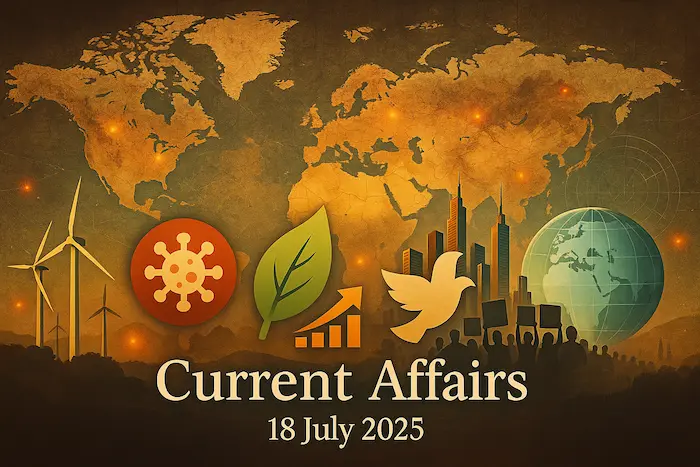1. India Achieves Clean Energy Target Ahead of Schedule – Environment
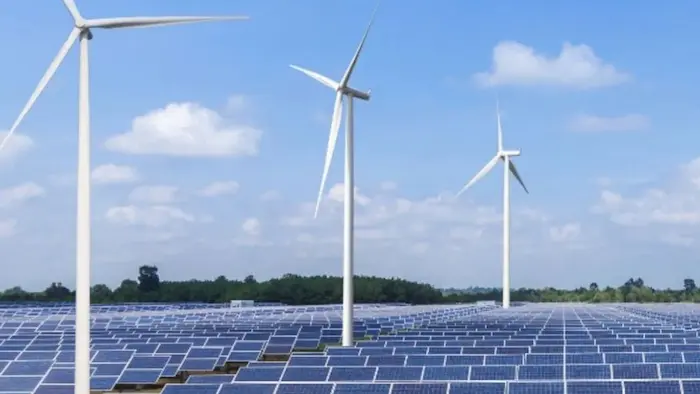
Why in News?
India has met its Paris Agreement target of achieving 50% of installed electricity capacity from non-fossil fuel sources — five years ahead of the 2030 deadline. This is a significant step in India’s commitment to climate change mitigation and sustainable development.
Key Highlights:
Milestone Achieved:
- As of June 30, 2025, 50.1% of India’s total installed power capacity comes from non-fossil fuel sources.
- Total installed power capacity: 485 GW
– Renewable (solar, wind, hydro, nuclear): 50.1%
– Fossil fuel-based (coal, gas): 49.9%
Decline in Fossil Fuels:
- Thermal power (mostly coal and gas) has reduced from 70% in 2015 to 49.9% in 2025.
Renewable Energy Growth in India:
- India ranks 4th globally in renewable energy installed capacity (after China, the US, and Brazil).
- Rapid growth in solar and wind energy is the primary driver of this achievement.
Challenges Ahead – Energy Storage & Grid Stability:
1. Inadequate Storage Infrastructure:
- Only <5 GW of energy storage capacity as of 2024.
- Causes difficulty in managing:
- Peak demand
- Surplus energy during low demand periods
2. Government Initiatives:
- Central Electricity Authority (CEA) suggests co-locating battery storage with solar parks.
- Increased budgetary support for battery storage R&D and capacity expansion.
3. Barriers to Implementation:
- High capital costs of battery technologies.
- Import duties and domestic content rules raise costs.
- Bureaucratic delays in project approvals.
Implications and Significance:
- Environmental Impact: Reduces carbon emissions; supports global efforts against climate change.
- Energy Security: Diversifies India’s energy mix and reduces dependency on imported fossil fuels.
- Economic Growth: Boosts the green economy and employment in the renewable sector.
- Global Leadership: Enhances India’s credibility in international climate negotiations.
Exam Connect – Possible Questions
Prelims
1. As of June 2025, which of the following statements is correct?
A. India achieved 60% of its energy needs from non-fossil fuel sources
B. India is the second-largest renewable energy producer globally
C. India achieved 50.1% of its installed electricity capacity from non-fossil fuel sources
D. India relies solely on solar power to meet its climate goals
Answer: C. India achieved 50.1% of its installed electricity capacity from non-fossil fuel sources
2. Which of the following is a major barrier in India’s energy storage development?
1.High capital costs
2.Import dependence for battery components
3. Abundant hydroelectric capacity
4.Bureaucratic delays
Select the correct answer using the code below:
A. 1 and 2 only
B. 1, 2, and 4 only
C. 2 and 3 only
D. All of the above
Answer: B. 1, 2, and 4 only
Mains
1. “India’s clean energy transition is a global success story, but sustaining progress requires urgent action on energy storage and grid infrastructure.” Discuss in the context of India’s recent achievement of non-fossil fuel capacity targets. (Word Limit: 200)
2. Evaluate the impact of India’s renewable energy growth on its energy security, economic development, and environmental sustainability. What steps should be taken to overcome challenges in energy storage and grid integration? (Word Limit: 250)
2. AI-Based Alert System in Tadoba-Andhari Tiger Reserve – Environment

Why in News?
The Tadoba-Andhari Tiger Reserve (TATR) in Maharashtra has implemented an AI-powered loudspeaker alert system in 20 villages. This system detects and announces tiger movement in real time to prevent human-wildlife conflict — a recurring issue in and around wildlife reserves.
Key Takeaways:
New AI-Based Initiative:
- Artificial Intelligence (AI) alert system uses sensors and tracking data to monitor tiger movements.
- Loudspeakers automatically broadcast real-time alerts in nearby villages when tigers are detected.
- Objective: Ensure human safety and reduce accidental encounters or retaliatory killings of tigers.
About Tadoba-Andhari Tiger Reserve (TATR):
| Feature | Description |
|---|---|
| Location | Chandrapur district, Maharashtra |
| Constituents | Tadoba National Park (est. 1955) + Andhari Wildlife Sanctuary (est. 1986) |
| Status | Notified as a Project Tiger Reserve in 1995 |
| Area | ~1,727 sq km (Core + Buffer) |
| Name Origin | ‘Tadoba’ from tribal deity Taru; ‘Andhari’ from the Andhari River flowing through the area |
| Forest Type | Southern Tropical Dry Deciduous Forests |
| Major Flora | Teak, Tendu, Salai, Bamboo |
| Water Sources | Tadoba Lake, Kolsa Lake, Tadoba River |
Rich Biodiversity:
TATR supports a healthy and visible population of:
- Mammals: Tiger, Leopard, Sloth Bear, Indian Gaur, Wild Dog (Dhole), Chital, Sambar
- Birds: Over 195 species including crested serpent eagle, paradise flycatcher
- Reptiles: Marsh crocodile, python, cobra
- Insects: Over 74 butterfly species
Human-Wildlife Conflict:
- Frequent tiger incursions into agricultural fields and villages near the buffer zone.
- Conflict results in:
- Loss of livestock
- Human injuries or deaths
- Retaliatory attacks on wildlife
- The new AI system acts as an early-warning mechanism, fostering coexistence through tech-based conservation.
Conservation Significance:
- Represents model integration of technology in conservation.
- Strengthens India’s commitment to tiger conservation under the National Tiger Conservation Authority (NTCA).
- Sets precedent for using AI and smart systems in forest management.
Exam Connect – Possible Questions
Prelims
1. With reference to the Tadoba-Andhari Tiger Reserve (TATR), consider the following statements:
1.It is located in the Satpura range of Madhya Pradesh.
2.It comprises Tadoba National Park and Andhari Wildlife Sanctuary.
3.It is dominated by Tropical Wet Evergreen Forests.
Which of the above statements is/are correct?
A. 1 and 2 only
B. 2 only
C. 2 and 3 only
D. All of the above
Answer: B. 2 only
2. The AI-based alert system recently implemented in Tadoba-Andhari Tiger Reserve is primarily aimed at:
A. Improving water supply for wildlife
B. Tracking illegal logging
C. Warning villagers about tiger movements
D. Monitoring forest fires
Answer: C. Warning villagers about tiger movements
Mains
1. Human-wildlife conflict remains a persistent conservation challenge in India. Discuss how technology like artificial intelligence can be leveraged to mitigate such conflicts, with reference to recent developments in the Tadoba-Andhari Tiger Reserve. (Word Limit: 200)
2. Examine the ecological significance of the Tadoba-Andhari Tiger Reserve. In what ways can community engagement and technological innovation support conservation in India’s protected areas? (Word Limit: 250)
3. Supreme Court Allows Secretly Recorded Spousal Conversations as Evidence – Polity
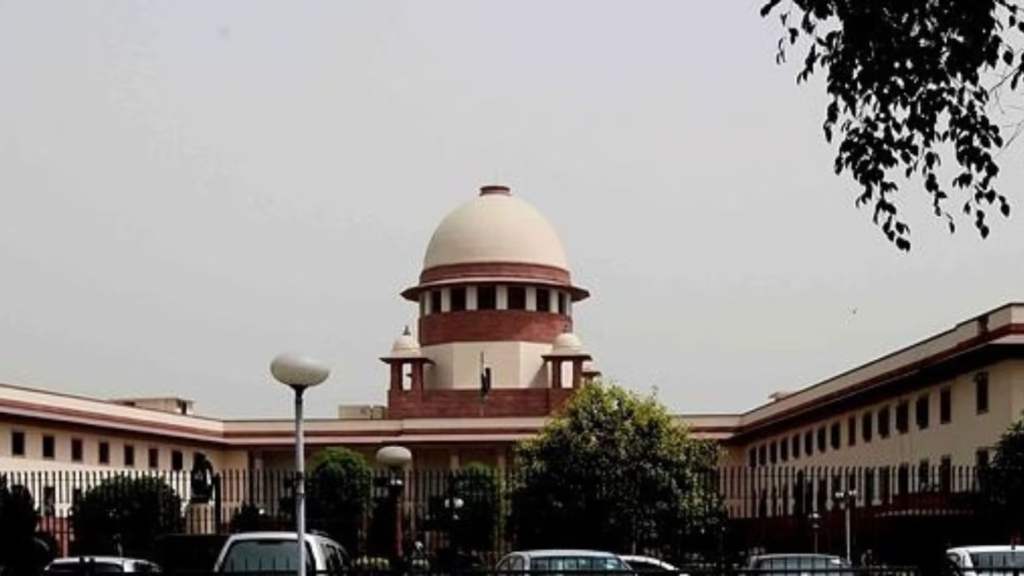
Why in News?
The Supreme Court of India has ruled that secretly recorded conversations between spouses are admissible as evidence in matrimonial disputes such as divorce cases. This decision marks a major shift in the interpretation of privacy rights and spousal privilege within the Indian legal system.
Key Takeaways:
Legal Context:
- Overturns previous High Court decisions that excluded such evidence on privacy grounds.
- Reinforces that relevant and verifiable digital evidence (including recordings) can be used in courts if it aids in delivering a fair trial.
Spousal Privilege – Section 122 of the Indian Evidence Act:
- Protects confidentiality of communications between spouses during marriage.
- Exception: Spouses can be compelled to disclose such communication if the legal proceeding is between the two spouses, such as in divorce or domestic violence cases.
Digital Evidence and Its Role:
- The Court recognized the increasing use of electronic evidence (texts, audio/video recordings, emails) in matrimonial cases.
- The ruling aligns with a 1973 Supreme Court precedent allowing audio surveillance as admissible in bribery cases.
Privacy vs. Fair Trial:
- Right to Privacy is a fundamental right (as per Justice K.S. Puttaswamy v. Union of India, 2017).
- The Court acknowledged that:
- Secret recordings may breach privacy, but
- They are justified if used to ensure justice, especially in cases of cruelty, abuse, or adultery.
Gender and Access Concerns:
- The Mobile Gender Gap Report highlights that:
- Indian women are less likely to own smartphones or have digital literacy, potentially putting them at a disadvantage in digital evidence-based trials.
- Raises ethical concerns about surveillance within marriages, especially where power and tech access are unequal.
Legal and Social Implications:
- The judgment shifts the emphasis from protecting marital privacy to preserving the institution of marriage and fair adjudication.
- Reinforces the need for legislative clarity on:
- Limits of digital surveillance in domestic settings
- Rights and protections of vulnerable spouses
- Could influence family law jurisprudence, especially with rising use of AI and surveillance tech.
Exam Connect – Possible Questions
Prelims
1. Consider the following with respect to spousal privilege under Indian law:
1. It is codified under Section 122 of the Indian Evidence Act.
2. It prevents one spouse from ever testifying against the other in any case.
3. It does not apply when the legal case is between the spouses themselves.
Which of the statements are correct?
A. 1 and 2 only
B. 1 and 3 only
C. 2 and 3 only
D. All of the above
Answer: B. 1 and 3 only
2. The Supreme Court recently allowed which of the following as admissible evidence in matrimonial disputes?
A. Polygraph tests
B. Unverified social media posts
C. Secretly recorded spousal conversations
D. Hearsay statements from relatives
Answer: C. Secretly recorded spousal conversations
Mains
1. Discuss the legal and ethical implications of allowing secretly recorded spousal conversations as admissible evidence. How does this decision balance the right to privacy and the right to a fair trial? (Word Limit: 200)
2. In light of the Supreme Court’s ruling on spousal recordings, evaluate the challenges posed by digital surveillance within intimate relationships, especially in the context of gender disparities and access to technology. (Word Limit: 250)
4. Safe Havens No More: Sexual Violence in Workplaces and Educational Institutions – Governance
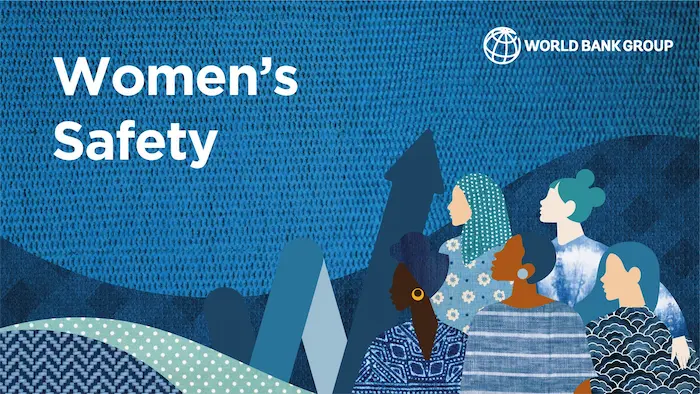
Why in News?
A tragic incident in Odisha, where a 20-year-old student died by suicide after her repeated sexual harassment complaints were ignored, has triggered nationwide concern over the failure of redressal mechanisms—especially the Internal Complaints Committees (ICCs) under the POSH Act, 2013.
Key Takeaways:
Legal Framework:
- POSH Act, 2013 (Sexual Harassment of Women at Workplace Act):
- Mandates formation of Internal Complaints Committees (ICCs) in all workplaces and educational institutions.
- ICCs are responsible for receiving, investigating, and resolving complaints of sexual harassment.
- Criminal Law (Amendment) Act, 2013: Strengthened legal provisions for sexual offences, post the Nirbhaya case.
Systemic Failures Highlighted:
1. Non-Implementation of ICCs:
- As per UGC data (2022), over 150 colleges lacked ICCs, violating POSH norms.
- Many ICCs exist only on paper or lack trained, unbiased members.
- In Odisha, state government had to issue emergency orders after the student’s suicide, instructing colleges to comply with POSH requirements within 24 hours.
2. Underreporting and Stigma:
- Victims often face:
- Fear of retaliation
- Victim-blaming
- Distrust in institutional response
- NCRB 2022 data shows 4.45 lakh crimes against women, a 4% increase from 2021—but actual numbers are likely much higher due to underreporting.
3. Lack of Awareness:
- A 2023 AIDWA survey found:
- 60% of female students in rural colleges were unaware of ICCs or their rights under the POSH Act.
- Indicates gap in legal literacy, especially in non-urban and marginalized communities.
Implementation Challenges:
| Issue | Impact |
|---|---|
| Lack of trained ICC members | Incompetent or biased investigation |
| Institutional apathy | Delayed or no action on complaints |
| Absence of third-party oversight | Potential for conflict of interest |
| No penalty for non-compliance | Encourages negligence |
Steps for Improvement:
- Strict Enforcement of ICC Guidelines:
- Regular audits, training, and accountability mechanisms.
- Penalties for non-compliant institutions.
- Transparent Grievance Redressal:
- Time-bound complaint resolution.
- Digital platforms for anonymous reporting.
- Third-party oversight to minimize bias.
- Support for Victims:
- Ensure confidentiality and protection from retaliation.
- Provide counselling, legal aid, and rehabilitation services.
- Awareness and Sensitisation Drives:
- Regular gender sensitization workshops in colleges and workplaces.
- Legal awareness through campaigns, orientation programs, and curriculum integration.
Exam Connect – Possible Questions
Prelims
1. Which of the following are mandatory provisions under the POSH Act, 2013?
1.Formation of Internal Complaints Committee (ICC) in every workplace
2. Provision for anonymous reporting
3. Time-bound investigation and resolution
4. Representation of a third-party NGO in ICC
Select the correct answer:
A. 1 and 2 only
B. 1, 3, and 4 only
C. 2, 3, and 4 only
D. All of the above
Answer: B. 1, 3, and 4 only
(Explanation: Anonymous reporting is not explicitly provided under POSH Act, though some institutions have adopted it voluntarily.)
2. Which of the following Acts aims to address sexual harassment in Indian workplaces?
A. Domestic Violence Act, 2005
B. Criminal Law (Amendment) Act, 2013
C. POSH Act, 2013
D. Indecent Representation of Women (Prohibition) Act, 1986
Answer: C. POSH Act, 2013
Mains
1. Despite the presence of legal mechanisms like the POSH Act, sexual harassment remains pervasive in Indian workplaces and educational institutions. Identify the key challenges in implementation and suggest practical reforms. (Word Limit: 250)
2. Discuss the role of Internal Complaints Committees (ICCs) under the POSH Act. Evaluate how institutional apathy and social stigma hinder their effectiveness, using recent events to support your answer. (Word Limit: 200)
5. India Seeks Co-Production of Javelin Anti-Tank Guided Missiles (ATGMs) – Defence & Security
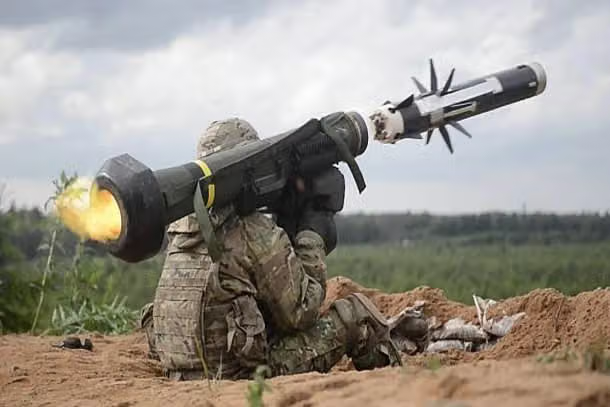
Why in News?
India has formally submitted a request to the United States for the co-production of Javelin anti-tank guided missiles (ATGMs). This proposal aims to bolster India’s defence manufacturing capacity under the Make in India initiative and enhance its capability to counter armored threats.
Key Facts About the Javelin Missile:
| Feature | Details |
|---|---|
| Origin | United States |
| Developers | Raytheon Technologies & Lockheed Martin |
| Type | Man-portable, fire-and-forget anti-tank guided missile (ATGM) |
| First Deployment | 1996 (by U.S. military) |
| Combat Use | Extensively used in Iraq, Afghanistan, and Ukraine |
Technical Specifications:
| Specification | Details |
|---|---|
| Weight | Approx. 5.11 kg (missile only; full system is heavier) |
| Range | 2.5 km (standard), up to 4 km (advanced variants) |
| Guidance | Infrared homing (fire-and-forget technology) |
| Attack Modes | Top-attack & direct attack |
| Effectiveness | Can destroy tanks, bunkers, and low-flying helicopters |
Key Features Explained:
Fire-and-Forget Guidance:
- Once fired, the missile locks on to the target and guides itself.
- This allows soldiers to reposition quickly, improving survivability in combat zones.
Top-Attack Capability:
- Most modern tanks have thinner armor on top.
- The Javelin’s top-attack mode targets this vulnerability, enhancing its lethality against armored vehicles.
Strategic Significance for India:
1. Boost to Indigenous Defence Manufacturing:
- Co-production aligns with the ‘Atmanirbhar Bharat’ and ‘Make in India’ initiatives.
- Encourages technology transfer and local assembly, reducing dependency on imports.
2. Enhanced Operational Capabilities:
- Ideal for mountain warfare, especially in terrains like LAC with China or LoC with Pakistan.
- Useful for infantry-based anti-armor operations, especially against enemy tanks and bunkers.
3. Strengthening India–US Defence Ties:
- Reflects deepening strategic partnership under frameworks like:
- BECA (Basic Exchange and Cooperation Agreement)
- COMCASA (Communications Compatibility and Security Agreement)
- Indo-US Defence Technology and Trade Initiative (DTTI)
Exam Connect – Possible Questions
Prelims
1. Consider the following features of the Javelin missile system:
1.It is a man-portable, fire-and-forget missile system.
2.It has a top-attack mode for targeting tanks.
3.It uses radar-guidance technology.
Which of the above statements are correct?
A. 1 and 2 only
B. 2 and 3 only
C. 1 and 3 only
D. All of the above
Answer: A
(Explanation: The Javelin uses infrared homing, not radar guidance.)
2. The term “fire-and-forget” in missile systems refers to:
A. Manual control after launch
B. Autonomous target tracking post-launch
C. Homing missiles with GPS corrections
D. Pre-programmed explosive sequence
Answer: B. Autonomous target tracking post-launch
Mains
1. Discuss the significance of co-producing advanced weapon systems like the Javelin ATGM in India. How does such collaboration align with India’s defence policy and strategic autonomy goals? (Word Limit: 200)
2. Evaluate the role of man-portable anti-tank guided missiles in modern asymmetric warfare. How can systems like the Javelin enhance India’s border defence strategy? (Word Limit: 250)
6. Coronal Mass Ejections (CMEs) and Their Impact on Earth – Science & Technology

Why in News?
Astronomers have recently explained the cause of Coronal Mass Ejections (CMEs) responsible for northern lights observed in Ladakh in May 2024. These rare and vivid auroras are visual evidence of geomagnetic activity triggered by solar events, raising interest in how solar storms affect Earth.
What Are Coronal Mass Ejections (CMEs)?
Definition:
CMEs are large-scale eruptions of magnetized plasma from the Sun’s corona (outer atmosphere). These powerful outbursts eject billions of tons of charged particles into space and can interact with Earth’s magnetic field if Earth-directed.
Key Features and Scientific Details:
| Feature | Description |
|---|---|
| Formation | Caused by magnetic reconnection – the breaking and rejoining of magnetic field lines on the Sun’s surface. Often originate near sunspot groups. |
| Speed | Typically range between 250 km/s to 3000 km/s. Fast CMEs can reach Earth in 15–18 hours. |
| Size | Can expand to sizes spanning 1/4th the distance between the Earth and the Sun. |
| Frequency | More common during the solar maximum, the active peak of the 11-year solar cycle. |
| Relation to Solar Flares | CMEs and solar flares both result from magnetic activity but are distinct phenomena. They may occur together or independently. |
Effects on Earth:
Positive/Visual Phenomena:
- Auroras (Northern and Southern Lights): Seen in high-latitude regions like Ladakh, Scandinavia, or Alaska when charged particles interact with Earth’s atmosphere.
Disruptive Impacts:
- Geomagnetic storms caused by CMEs can:
- Disrupt satellite operations and GPS accuracy
- Affect power grids, especially in northern regions
- Disturb radio communications and aviation navigation
- Pose risks to astronauts and spacecraft electronics
Why Monitoring CMEs Matters for India:
- India increasingly relies on space-based technology (e.g., IRNSS, INSAT, communication satellites).
- CMEs can impact:
- ISRO satellite missions
- Aviation navigation systems
- National power grids, especially in northern states
- With growing space ambitions, India needs stronger space weather forecasting systems, like the Aditya-L1 solar observatory mission.
Exam Connect – Possible Questions
Prelims
1. Coronal Mass Ejections (CMEs) are associated with which of the following?
1.Magnetic reconnection in the Sun’s atmosphere
2.Release of highly magnetized plasma
3.Disruption of power and communication systems on Earth
Select the correct answer:
A. 1 and 2 only
B. 2 and 3 only
C. 1 and 3 only
D. 1, 2 and 3
Answer: D. 1, 2 and 3
2. Which of the following Indian missions is specifically designed to study solar phenomena like CMEs?
A. Chandrayaan-2
B. RISAT-2B
C. Aditya-L1
D. Gaganyaan
Answer: C. Aditya-L1
Mains
1. What are Coronal Mass Ejections (CMEs), and how do they impact Earth’s technological systems? Discuss with reference to recent geomagnetic events observed in India. (Word Limit: 200)
2. Evaluate the importance of space weather forecasting for India’s technological and strategic infrastructure. Suggest measures to strengthen India’s preparedness against solar storms. (Word Limit: 250)

